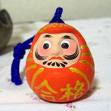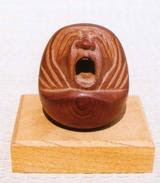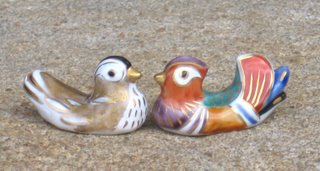[ . BACK to Daruma Museum TOP . ]
:::::::::::::::::::::::::::::::::::::::::::::::::::::::::::::::::::::::::::::::::::::::::::::::::::::
............... Literature Register
Japanese, English and German
:::::::::::::::::::::::::::::::::::::::::::::::::::::::::::::::::::::::::::::::::::::::::::::::::::::
Digital Dictionary of Buddhism
電子佛教辭典
. www.buddhism-dict.net .
:::::::::::::::::::::::::::::::::::::::::::::::::::::::::::::::::::::::::::::::::::::::::::::::::::::
***** *A
Ajiro, Keisuke; Okada, Tomoyuki
Dagakki Jiten - Handbook of Percussion and Effect Instruments
Ongaku no Tomo Sha, Neuauflage Tookyoo 1994
Anesaki, Masaharu
History of Japanese Religion
Charles E. Tuttle Company, Tookyoo 1963
Arakawa, Yasuichi
Zen Painting
Kodansha
Arika, Yoshitaka
Butsuga no Kanshoo Kisoku Chishiki
(Grundlagen bei der Betrachtung von buddhistischen Bildern)
Shibundoo, Tookyoo 1991
Ashida, Shoojiro
Butsuzoo Miwakekata Jiten
(Lexikon zur Unterscheidung von Buddhastatuen)
Hokushindoo, Tookyoo 1989
Auboyer, Jeannine, Hrsg.
Handbuch der Formen- und Stilkunde - Asien
W. Kohlhammer Verlag, Stuttgart 1978
***** *B
Bechert, Heinz, Hrsg.
Die Welt des Buddhismus
Verlag C.H.Beck, München 1984
Brauen, Martin
Das Mandala
DuMont Buchverlag, Köln 1992
***** *C
Conze, Edward
Der Buddhismus - Wesen und Entwicklung
Urban-Bücher, W. Kohlhammer Verlag, Stuttgart 1953
***** *D
Daigoji-ten
Ausstellungskatalog des Tempels Daijoji
Nihon Keizai Shinbunsha, Tookyoo 1989
Dittrich, Edith
Buddhistische Kunst Ostasiens
Ausstellungskatalog des Museums für Ostasiatische Kunst
Köln 1968
***** *E
Earhart, Byron H.
Shugendoo
Sophia University Press, Tookyoo 1970
Eberhard, Wolfram
Lexikon chinesischer Symbole
Eugen Diederichs Verlag, Köln 1983
***** *F
Frommknecht, Christa, Redaktion
Dokumentation - 2. China-Akademie, Herbst 1993
Auslandsgesellschaft Nordrhein-Westfalen e.V., Dortmund 1994
Fukuyama, Toshio
Heian Temples: Byoodoo-In and Chuuson-Ji
Weatherhill, New York - Tookyoo 1976
***** *G
Gabbert, Gunhild, Hrsg.
Buddhistische Plastik aus China und Japan
Museum für Ostasiatische Kunst der Stadt Köln
Franz Steiner Verlag, Wiesbaden 1972
Getty, Alice
The Gods of Northern Buddhism - Their History and Iconography
Dover Publications, New York, Reprint 1988 (First Edition 1914)
Glaser, Curt
Die Kunst Ostasiens
Insel-Verlag, Leipzig 1922
Goepper, Roger (1)
Kunst und Kunsthandwerk in Ostasien
Keysersche Verlagsbuchhandlung, München 1968
Goepper, Roger (2)
Mandala-Darstellungen im esoterischen Buddhismus Japans
in: Symbolon, Jahrbuch für Symbolforschung, NF 1
Wienand Verlag, Köln 1972
Goepper, Roger (3)
Kekkai, Notes on a Shingon Ceremony and its Connections with Art.
In: Formation and Development of Buddhist Art in Japan
Nara Kokuritsu Hakubutsukan, Nara 1978
Goepper, Roger (4)
Shingon - Die Kunst des Geheimen Buddhismus in Japan
Museum für Ostasiatische Kunst, Köln 1988
Goepper, Roger (5)
Aizen-Myoooo
Artibus Asiae (Supplementum 39), Zürich 1993
Gojoo, Junkyoo
Shugendoo no Kokoro (Das Wesen des Shugendoo)
Toki Shoboo, Osaka 1983
Greve, Gabriele
Buddhastatuen - Who is Who
Paradise Publishers, Kamakura 1994
Greve, Gabriele
Buddhistische Kultgegenstände Japans
Paradise Publishers, Kamakura 1996
Buddhistisches Kultgeraet, Buchrezension
Groner, Paul
Saicho: The Establishment of the Japanese Tendai School.
University of Hawaii Press. 2000
ISBN 0-8248-2371-0.
***** *H
Hamada, Takashi, Hrsg.
Bukkyoo Bijutsu Nyuumon (Einführung in die Kunst des Buddhismus) - Band 1-6
Heibonsha, Tookyoo 1990
Hamashima, Masaji, Hrsg.
Jisha Kenchiku no Kanshoo Kiso Chishiki (Grundwissen beim Betrachten von Shreinen)
Shoobundoo, Tookyoo 1992
Hammitzsch, Horst, Hrsg.
Japan-Handbuch
Franz Steiner Verlag, Wiesbaden 1981
Hanayama, Shooyuu
Butsuzoo no subete (Alles über Buddhastatuen)
PHP Institute, Tookyoo 1991
Hieizan to Tendai no Bijutsu
Die Kunst der Tendai-Sekte und des Tempels Hieizan - Ausstellungskatalog
Asahi Shinbunsha, Tookyoo 1986
Hitomi Haruo et al.
Bunkazai no Mikata - Rekishisanpoo no Tebiki
Yamakawa Shuppansha, Tookyoo 1984
Hori, Ichiroo (Editor)
Japanese Religion
A Survey by the Agency for Cultural Affairs
Kodansha 1972
ISBN : 4-7700-0955-0
Hooryuuji Mitsuhoo-ten
Schätze des Tempels Hooryuuji
Ausstellungskatalog
Bunkachoo, NHK, Nara 1990
Hooryuuji-ten
Ausstellungskatalog des Tempels Hooryuuji
Shogakukan, Tookyoo 1985
***** * I
Imai, Shoodoo
Shakyoo to Shabutsu (Abmalen von Sutras und Buddhas)
Ikeda Shoten, Tookyoo 1988
Immoos, Thomas; Halpern, Erwin
Japan - Tempel, Gärten und Paläste
DuMont Buchverlag, Köln 1982
Inagaki, Hisano, Hrsg.
A Dictionary of Japanese Buddhist Terms
Nagata Bunshoodoo, Kyooto 1988
Inoue, Mitsusada
Rekishi Sampoo Jiten (Lexikon: Wanderungen durch die Geschichte)
Yamakawa Shuppansha, Tookyoo 1979
Irie, Taikichi; Aoyama, Shigeru
Buddhist Images
Translated by Thomas I. Elliott
Hoikusha Color Books, Osaka 1970
Iwai, Hiromi, Hrsg.
Nihon no Yookai (Die Gespenster Japans)
Kawade Shoboo Shinsha, Tookyoo 1990
Iwano, Shinyuu
Japanese English Buddhist Dictionary - Revised Edition
Daitoo Shuppansha, Tookyoo 1991
***** *J
Jarves, James Jackson
A Glimpse at the Art of Japan
Charles E. Tuttle Company, Tookyoo, Reprint 1984
***** *K
Kageyama, Haruki
The Arts of Shinto
Weatherhill, New York - Tookyoo 1973
Kamakura no Mitsuhoo
Ausstellungskatalog der Geheimschätze Kamakuras
Ootsuka Koogeisha, Yokohama 1990
Kanaoka, Shuuryuu
Koji Meisatsu Daijiten (Großes Lexikon berühmter alter Tempel)
Tookyoodoo, Tookyoo 1981
Kanda, Akira
Butsuzoo Hayawakari Kohyakka (Kurze Einführung zum Verständnis von Buddhastatuen)
Shunkasha, Tookyoo 1985
Katoo, Shuuichi (1)
Kamigami to Hotoke no Deai (Das Zusammentreffen der Götter und Buddhas)
Nihon - Sono Kororo to Katachi, Band 2
Heibonsha, Tôkyô 1987
Katoo, Shuuichi (2)
Japan - Spirit and Form
Charles E. Tuttle Company, Tookyoo 1994
Kawada, Sadamu, Hrsg.
Busshari to Kyoo no Shoogon (Schmuckobjekte für Reliquien und Sutren)
Nihon no Bijutsu, Nr. 280; Shibundoo, Tôkyô 1989
Kawahara, Yoshio, Hrsg.
Butsuzoo no Mikata - Miwakekata Hyakka (Einführung in die Betrachtungsweise und Unterscheidung von Buddhastatuen)
Shufu to Seikatsusha, Tookyoo 1995
Kinkaku Ginkaku Meihoo-ten
Ausstellungskatalog der Tempel Kinkakuji und Ginkakuji
Yomiuri Shinbunsha, Oosaka 1991
Kobayashi, Takeshi
Nara Buddhist Art: Toodai-Ji
Weatherhill, New York - Tookyoo, 1975
Koto Meihoo Hyakkasen
Ausstellungskatalog der Kunstschätze der Stadt Kamakura
Ootsuka koko sha, Yokohama 1989
Kraatz, Martin, Hrsg.
Das Bildnis in der Kunst des Orients
Franz Steiner Verlag, Stuttgart 1990
Kuno, Takeshi (1)
Butsuzoo Jiten (Lexikon der Buddhastatuen)
Tookyoodoo Shuppan, Tookyoo 1975
Kuno, Takeshi (2)
Butsuzoo Fudooki (Buddhastatuen in Japan)
NHK, Tookyoo 1979
Kuno, Takeshi (3)
Butsuzoo Junrei Jiten (Lexikon der Pilgerfahrten zu Buddhastatuen)
Yamakawa Shuppansha, Tookyoo 1986
Kuno, Takeshi (4)
Butsuzoo no Rekishi (Geschichte der Buddhastatuen)
Yamakawa Shuppansha, Tookyoo 1987
Kuno, Takeshi (5),
Butsuzoo Kanshoo no Kihon (Grundlegendes bei der Betrachtung von Buddhastatuen)
Satobun, Tookyoo 1990
***** *L
Lommel, Andreas
Buddhistische Kunst
Katalog des Staatlichen Museums für Völkerkunde, München 1974
***** *M
Machida, Kooichi und Nagai Shinichi, Hrsg.
Nihon Bijutsu Kojiten (Kleines Lexikon der japanischen Kunst)
Kadokawa Shoten, Tookyoo 1977
Masumura, Satoko, Hrsg.
Urushi Koogei Jiten (Lexikon der Lackkunst)
Koogei Shuppan, Tookyoo 1994
Matsumoto, Akira
Nihon no Miira-butsu (Die Buddha-Mumien Japans)
Rinkawa sensho, Tookyoo 1993
Mizuno, Seiichi
Asuka Buddhist Art: Hooryuuji
Weatherhill, New York - Tookyoo 1974
Mochizuki, Shinjoo, Hrsg.
Butsuzoo - Kokoro to Katachi
(Buddhastatuen - ihr Wesen und ihre Form)
NHK, Tookyoo 1990,
Mori, Yuuo
Shimokita no Itako Monogatari
Aomori Offsett Insatsu, Aomori 1991
Morse, Anne Nishimura; Morse Samuel Crowell, Hrsg.
Object as Insight - Japanese Buddhist Art and Ritual
Katonah Museum of Art, New York 1995
Mosaku, Ishida, Hrsg.
Mikkyô Hôgu (Kultgerät des esoterischen Buddhismus)
Verlag, Tôkyô 1965 HD: 991/1 C
***** *N
Nagata, Hisashi
Nenjuu Gyooji o Kagaku suru (Wissenschaftliche Erklärungen der Jahreszeitenfeste)
Nippon Keizai Shinbunsha, Tookyoo 1989
Nakagawa, Takeshi, Hrsg.
Nihon Kenchiku midokoro Jiten (Wörterbuch über die Spezialitäten Japanischer Architektur)
Tookyoodoo Shuppan, Tookyoo 1990
Nakamura, Hajime (1)
Ways of Thinking of Eastern Peoples
University Press of Hawaii, 1964
Nakamura, Hajime, Hrsg. (2)
Bukkyoo Jiten (Lexikon des Buddhismus)
Iwanami Shoten, Tookyoo 1989
Nakamura, Hajime, Hrsg. (3)
Anata dake no Hanya Shinkyoo (Das ganz persönliche Herz-Sutra)
Shogakukan, Tookyoo 1990
Nanba, Tsuneo
Kanpôyaku Nyûmon (Einführung in die chinesische Heilpflanzen-Medizin)
Hoikusha, Oosaka 1970
Naniwada, Tooru, Hrsg.
Kyoozoo to Kakebotoke (Buddhabilder auf Spiegeln und Hänge-Buddhas)
Nihon no Bijutsu, Nr. 284; Shibundoo, Tookyoo 1990
Nara Saidaiji-ten
Ausstellungskatalog des Tempels Saidaiji, Nara
Nihon Keizai Shinbunsha, Tookyoo 1991
Naya, Yoshiharu, Hrsg.
Koodoo Nyuumon (Einführung in den Weg des Duftes)
Tankoosha, Tookyoo 1993
Neighbour Paren, Mary
The Roof in Japanese Architecture
Weatherhill, Tookyoo 1983
Nihon Bijutsu Meihoo-ten
Art Treasures of Japan - Tookyoo National Museum - Ausstellungskatalog
Yomiuri Shinbunsha, Tookyoo 1986
Nihon Kokuhoo-ten
National Treasures of Japan - Tookyoo National Museum - Ausstellungskatalog
Yomiuri Shinbunsha, Tookyoo 1990
Nishimura, Koochoo (1)
Butsuzoo no Saihakken (Die Wiederentdeckung der Buddhastatuen)
Yoshikawa Koobunkan, Tookyoo 1976
Nishimura, Koochoo (2)
Hotoke no Sekaikan (Das Weltanschauung des Buddha)
Yoshikawa Koobunkan, Tookyoo 1979
Nishimura, Koochoo (3)
Yasashii Butsuzoo no Mikata
(Die rechte Betrachtungsweise der Buddhastatuen)
Shinchoosha, Tookyoo 1983
Nishimura, Koochoo (4)
Butsuzoo no Miwakekata (Unterscheidung der Buddhastatuen)
Shinchoosha, Tookyoo 1984
Nishimura, Koochoo (5)
Inori no Zookei (Gebete werden Statuen)
Shinchoosha, Tookyoo 1988
Nishimura, Koochoo (6)
Butsuzoo ga Kataru (Buddhastatuen erzählen)
Shinchoosha, Tookyoo 1990
Nishimura, Koochoo (7)
Unkei no Kakumei (Die Revolution des Unkei)
Geijutsu Shinchoo 2, Tookyoo 1992
***** *O
Ooguri, Dooei
Kaiun - Juusanbutsu (Die 13 Buddhas, die Glück bringen)
Nihon Bungeisha, Tookyoo 1992
Okada, Yoshiroo, Hrsg.
Gendai Koyomi Yomitoki Jiten (Der moderne Kalender - Ein Lexikon)
Kashiwa Shoboo, Tookyoo 1993
Oomori, Takashi, Hrsg.
Mikkyoo no Hon (Das Buch vom esoterischen Buddhismus)
Books Esoterica, Gakken, Tookyoo 1992
Oomori, Takashi; Hrsg. (2)
Shugendoo no Hon (Das Buch über den japanischen Weg der Bergasketen)
Books Esoterica Nr.8, Gakken, Tookyoo 1993
***** *P
Papinot, E.
Historical and Geographical Dictionary of Japan
Charles E. Tuttle Company, Tookyoo 1972
Pevsner, Sir Nikolaus, Hrsg.
Lexikon der Weltarchitektur
Prestel-Verlag, München 1971
Plaeschke, Herbert
Buddhistische Kunst - Das Erbe Indiens
Verlag Hermann Böhlaus Nachf., Wien 1972
***** *R
Reischauer, Edwin O.
Ennin's Travels in Tang China
The Roland Press Company, New York 1955
***** *S
Saitoo, Akitoshi, Hrsg. (1)
Nihon Bukkyoo Jinmei Jiten (Lexikon buddhistischer Personennamen)
Shin Jinbutsu Ooraisha, Tookyoo 1993
Saitoo, Akitoshi, Hrsg. (2)
Bukkyoo Minzoku Jiten (Lexikon des volkstümlichen Buddhismus)
Shin Jinbutsu Ooraisha, Tookyoo 1993
Sakata, Munehiko, Hrsg.
Mikkyoo Hoogu (Ritualgegenstände des esoterischen Buddhismus)
Nihon no Bijutsu, Nr. 282; Shibundoo, Tookyoo 1989
Salmon, Patricia
Japanese Antiques
Art International Publishers, Tookyoo 1985
Sansom, George B.
Japan - von der Frühgeschichte bis zum Ende des Feudalsystems
Magnus Verlag, Essen 1975
Sasa, Fujio
A Dictionary of Japanese Art Terms
Tookyoo Bijutsu, Tookyoo 1990
Sasama, Yoshihiko
Nihon Mikakunin Seibutsu Jiten (Lexikon über noch nicht bestimmbare Lebewesen Japans)
Kashiwa Bijutsu Shuppansha, Tookyoo 1994
Saunders, E. Dale
Mudra - Bollingen Series LVII
Pantheon Books, New York 1960
Sawa, Takaaki (Ryuuken), Hrsg. (1)
Butsuzoo Zuten (Illustriertes Wörterbuch der Buddhastatuen)
Yoshikawa Koobunkan, Tookyoo 1962
Sawa, Takaaki (Ryûken) (2)
Art in Japanese Esoteric Buddhism
Weatherhill, New York - Tôkyô 1972
Sawa, Takaaki (Ryûken), Hrsg. (3)
Mikkyoo Bijutsu Taikan (Übersicht der Kunst des esoterischen Buddhismus)
Verlag, Tookyoo 1984
Sawa, Takaaki (Ryûken), Hrsg. (4)
Mikkyoo Jiten (Wörterbuch des esoterischen Buddhismus)
Hôzôkan, Kyôto 1975, Reprint 1992
Schuhmacher, Stephan, Hrsg.
Lexikon der östlichen Weisheitslehren
Otto Wilhelm Barth Verlag, Bern 1986
Schuhmacher, Stephan, Hrsg.
The Shambala Dictionary of Buddhism and Zen
Shambala Dragon Editions, Boston 1991
Schuhmann, Hans Wolfgang
Buddhistische Bilderwelt- Ein ikonographisches Handbuch des Mahayana- und Tantrayana-Buddhismus
Eugen Diederichs Verlag, Köln 1986
Seckel, Dietrich (1)
Kariteimo- Die "Buddhistische Madonna" in der japanischen Kunst
Otto Harrassowitz, Leipzig/ Tookyoo, 1944
Seckel, Dietrich (2)
Buddhistische Kunst Ostasiens
W. Kohlhammer Verlag, Stuttgart 1957
Seckel, Dietrich (3)
Einführung in die Kunst Ostasiens
Sammlung Piper, München 1960
Seckel, Dietrich (4)
Kunst des Buddhismus- Reihe Kunst der Welt
Holle-Verlag, Baden-Baden 1962
Seckel, Dietrich (5)
Jenseits des Bildes
1976
Seckel, Dietrich (6)
Buddhistische Tempelnamen in Japan
Münchner Ostasiatische Studien, Band 37
Franz Steiner Verlag, Wiesbaden, Stuttgart 1985
Seki, Hideo, Hrsg.
Kyoozuka to sono Ibutsu (Sutrahügel und dort vergrabene Gegenstädnde)
Nihon no Bijutsu, Nr. 292; Shibundoo, Tookyoo 1990
Sekine, Shunichi, Hrsg.
Hotoke, Bosatsu to Doonai no Shoogon (Schmuckgegenstände für Buddhas und Bosatsu in Tempelhallen)
Nihon no Bijutsu, Nr. 281; Shibundoo, Tookyoo 1989
Sennyuuji-ten
Ausstellungskatalog des Tempels Sennyuuji
Asahi Shinbunsha, Tookyoo 1990
Shimizu, Tadashi, Hrsg.
Butsugu Jiten (Lexikon über buddhistische Kultgegenstände)
Tookyoodoo Shuppan, Tookyoo 1978
Somekawa, Eisuke, Hrsg.
Mandara Zuten (Illustriertes Lexikon der Mandalas)
Daihoo Rinkaku, Tookyoo 1993
Speiser, Werner
Lackkunst in Ostasien
Holle-Verlag, Baden-Baden 1965
Stahn-Shimizu, Michael
Buddistische Holzskulptur der Nara- und frühen Heian-Zeit
Europäische Hochschulschriften
Peter Lang, Frankfurt 1994
Stanley-Baker, Joan
Japanese Art
World of Art Series, Thames and Hudson, London 1991
Sugiyama, Jiroo
Classic Buddhist Sculpture - The Tempyoo Period
Kodansha International Ltd. and Shibundoo, Tookyoo 1982
Suzuki, Daisetz T.
Zen and Japanese Culture
Pantheon Books. Bollinger Foundation, New York 1959
Suzuki, Norio, Hrsg.
Kuyoogu to Zoogu (Kultgerät für Opferzeremonien und Gegenstände von Priestern)
Nihon no Bijutsu, Nr. 283; Shibundoo, Tookyoo 1989
Swann, Peter C.
Kunst der Welt - Japan von der Joomon zur Tokugawa-Zeit
Holle-Verlag, Baden-Baden 1965
***** *T
Takemitsu, Makoto
Mikkyoo Jujutsu to Kenryokusha (Die magischen Praktiken des estoerischen Buddhismus und die Machthaber)
Nesco, Tookyoo 1994
Takuan, Soohoo
The Unfettered Mind
Übersetzt von William Scott Wilson
Kodansha International, Tookyoo 1986
Tamaru, Noriyoshi and Reid, David
Religion in Japanese Culture
Kodansha Int. Tokyo New York, 1996
ISBN: 4-7700-2054-6
Tanaka, Kimiaki
Tanka no sekai
Tibetto Bukkyoo Bijutsu Nyuumonn (Einführung in die Buddhistische Kunst Tibets - die Welt der Tanka)
Yamakawa Shuppansha, Tookyoo 2001
Tanaka, Yoshiyasu
Me de Miru Butsuzoo (Buddhastatuen, die wir ansehen) - Band 1 - 6
Tookyoo Bijutsu, Tookyoo 1986
Tani, Shinichi, Hrsg.
Nihon Bijutsu Jiten (Wörterbuch der japanischen Kunst)
Tookyoodoo; Tookyoo 1952
Toda, Eiho, Hrsg.
Hibutsu (Geheim-Buddhas)
Mainichi Shinbunsha, Tookyoo 1991
Toodaiji-ten
Ausstellungskatalog des Tempels Toodaiji
Asahi Shinbunsha, Tookyoo 1991
Torao, Toshiya; Delmer M. Brown
Chronology of Japan
Business Intercommunications Inc., Tookyoo 1987
Tsuda, Noritake
Handbook of Japanese Art
Charles E. Tuttle Company, Tookyoo 1941
Tsurugaoka Hachimangu
Ausstellungskatalog des Hachiman-Schreins, Kamakura
Ootsuka Koogeisha, Yokohama 1991
***** *U
Uehara, Shooichi, Hrsg. (1)
Nihon Bukkyoo no Sekai: Chingo Kokka to Jujutsu - Band 2
(Die Welt des japanischen Buddhismus: Staatsschutz und Magie)
Shueisha, Tookyoo 1989
Uehara, Shooichi, Hrsg. (2)
Nihon Bukkyoo no Sekai: Mandara no Uchuu - Band 4
(Die Welt des japanischen Buddhismus: Der Kosmos des Mandala)
Shueisha, Tookyoo 1988
Umhara, Kazu, Hrsg.
Ningen no Bijutsu (Kunst der Menschheit) - Band 1 bis 9
Gakken, Tookyoo 1990
***** *W
Washio, Ryuuki
Tooji no Myoozoo (Die Myoo-Statuen des Tooji-Tempels)
Tooji Hoomotsukan, Nara 1988
Watanabe, Shookoo
Fudoo Myoooo
Asahi Shinbunsha, Tookyoo 1975
Watson, William
Early Civilisation in China
Thames and Hudson, London 1966
Weiß, Gustav
Keramik-Lexikon
Ullstein Verlag, Frankfurt 1991
(ISBN 3-550-06505-1)
Williams, C.A.S.
Outlines of Chinese Symbolism and Art Motives
Charles E. Tuttle Company, Tookyoo 1974
***** *Y
Yamamoto, Nobuyoshi, Hrsg.
Mikkyoo Koogei (Applied Art of Japanese Esoteric Buddhism)
Ausstellungskatalog
Nara Kokuritsu Hakubutsukan, Nara 1992
Yamaori, Testuo
Nihon no Bukkyoo to Minzoku (Japanischer Buddhismus und das Volk)
Nihon Hoosoo (NHK) Shuppan Kyookai, Tookyoo 1989
Yokoyama, Kimizane
Mikkyoo - The Virtue of Avalokitesvara
Tama Publishing Co., Ltd, Tookyoo 1983
Yoshida, Shookin, Hrsg.
Bukkyoo Daijiten, Buddhica (Großes Lexikon des Buddhismus)
Shogakukan, Tookyoo 1988
------------------------------
Plastik aus Japan
Holzskulpturen des 8. bis 18. Jahrunderts
Museum für Ostasiatische Kunst, Köln 1979
**********************
Please send your contributions to Gabi Greve
Daruma Discussion Forum
Alphabetical Index of the Daruma Museum
.................More about my BOOKS !
© Gabi Greve
Buddhastatuen (Buddhastatues) Who is Who
Ein Wegweiser zur Ikonografie von japanischen Buddhastatuen
:::::::::::::::::::::::::::::::::::::::::::::::::::::::::::::::::::::::::::::::::::::::::::::::::::::
BACK ... zum INHALTSVERZEICHNIS
Buddhistische Kultgegenstände Japans
Buddhastatuen ... Who is Who
Daruma Pilgrims in Japan
O-Fudo Sama Gallery
:::::::::::::::::::::::::::::::::::::::::::::::::::::::::::::::::::::::::::::::::::::::::::::::::::::
worldkigo

























































